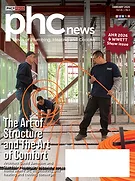The United States Capitol Power Plant in Washington, D.C. came online more than 100 years ago. This plant is still functional today, and serves as a utility for 23 buildings, including the Supreme Court and Capitol. It is also one of the earliest and most prominent uses of district heating in the U.S.
When the Capitol Power Plant started generating power in 1908, it sent electricity and steam heat to buildings near the eastern end of the Washington, D.C. Mall. You wouldn’t see much evidence of the wires and pipes from the surface because the lines run underground. In general, the only things you would see above ground outside the Capitol were tourists.
The impetus for underground utilities went beyond the aesthetics of maintaining clear sight lines for the monuments above. (As an example, Martin Luther King Jr.’s speech would have had a different look if a bunch of power lines were draped over the reflecting pool.) Security also was a key reason they went underground.
Keeping the utilities below the surface protects someone in a truck from driving into a utility pole and knocking out power to the legislative and judicial branches of the government. To take security a step further, a network of pedestrian passageways connects the Capitol to the legislative office buildings. It is safer to move a group of senators in and out of the Capitol in a tunnel than across the mall.
Some legislators are perhaps using the tunnel to dodge their constituents; most are avoiding the D.C. weather. The Washington Post wrote in 1907: “The tunnels have been planned with the idea of providing an easy access to the offices, particularly in bad weather. By using them it will not be necessary for the senators and representatives to go out into the open at all in order to reach offices from the Capitol, or vice versa.”
Architectofthecapital.org is a site dedicated to preserving documentation and stories from the building history of D.C. The author even created 3D renderings of the Capitol and adjacent buildings with the connection points throughout history. You can see the web of tunnels grow in complexity over time.
The site describes some of the conditions workers dealt with in the utility shafts: “The dimensions were cramped and swampy: tunnel workers shared the 7-foot-tall, 4.5-foot-wide space with steam pipes that raised temperatures over 100 degrees.” The legislators had better conditions in their pedestrian tunnels. The Senate built the first electric car system in 1909.
When construction of the Capitol building started in 1793, electricity and indoor plumbing weren’t part of the plans. The Capitol Power Plant brought the area into the modern era. Initially, it was a coal power plant that sent electricity to the buildings. Steam generators were added next for heating. Later, the electricity load was transferred to the local utility. Fancy marble bathtubs were installed in the basement of the Senate building with the addition of indoor plumbing. Chilled water lines were added for cooling. The power plant now operates primarily on natural gas. It is currently in the process of reviving the electrical generation capabilities, after a 50-year hiatus, with plans to add natural gas cogeneration. Overall, there was a lot of renovation work needed to bring the building from candles to chilled water-cooling.
A funny aside on architectofthecapital.org describes discovering a non-mapped tunnel under D.C. In 1917, a construction crew found a tunnel near DuPont Circle, a good distance northwest of the Capitol tunnel projects. They dug deeper, and found a 22-foot circumference tunnel that was reported to have been used during the Civil War or the War of 1812.
After some additional newspaper mentions in 1924, a man named Harrison G. Dyar decided to come forward. Dyar was the Smithsonian Institute’s mosquito expert entomologist at one point. Unfortunately for the conspiracy theorists, he didn’t confirm any wild stories about the origin and use of the tunnel. He admitted that, for over a decade, he dug the tunnels as a form of exercise after work. I’m not quite sure if it is more or less interesting than some secret, nefarious tunnel conspiracy that this guy was just a fan of digging a tunnel to nowhere.
Dyar told the Washington Star that he was digging a flowerbed with his wife in 1906 and, “When I was down perhaps 6 or 7 feet, surrounded only by the damp brown walls of old Mother Earth, I was seized by an undeniable fancy to keep on going.” Like the forefather of Forest Gump, he just kept going.
Scattered throughout the history of the D.C. infrastructure, there have been many congressional hearings, quite a few OSHA violations, accusations of shady politics and a lot of digging. One thing seems to be a rare congressional consensus; district heating and accessible utility tunnels are the way to go. The many advantages district heating provides have kept the utility projects under ground for over a hundred years of improvements.
Outside of the Capitol campus, central heating and cooling plants are underutilized. I love the idea of community solar arrays or giant geothermal loop fields in central shared spaces. You would have to run the numbers per project, but the installation costs for high-energy efficiency can be much lower when you commit to energy efficiency as a community. One 2,000,000 Btu boiler likely costs less to install than ten 200,000 Btu boilers in different locations.
We commonly accept the idea of putting an electrical power plant a long distance from the consumers of that energy. It would be an odd thing to suggest that every home in North America should have its own generator for electricity. While it isn’t practical to pump hot water or steam 100 miles, every house in a cul-de-sac doesn’t need its own boiler. Yet, on this continent we almost always have individual heating and cooling systems. The technology exists to sub-meter electricity, heating water and chilled water per unit or home from a central plant. You can pay your fair share of the energy used without having the physical equipment in your house.
District heating is something we need to consider more often. If the politicians in D.C. can make it work, chances are a general contractor or developer in your area can do it, too. We have the technology to effectively and efficiently utilize district heating and cooling; we lack the desire to plan that far ahead. Or maybe we don’t like digging tunnels as much as Dyar. Either way, if you can stand in one place and see five three-foot boiler vents, a larger, central system could be a better approach.






